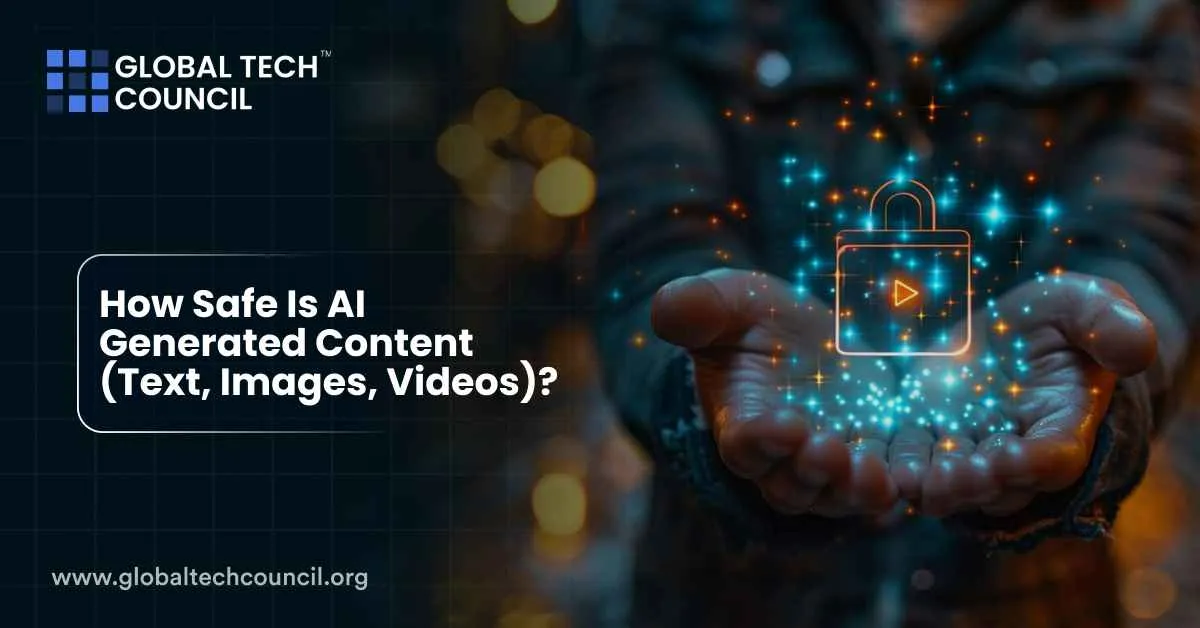 AI has reached a point where it can generate convincing news articles, lifelike images, and even full-motion videos that look real. This rapid progress raises an important question: how safe is AI-generated content for everyday use? From misinformation campaigns to fake identities, the risks are no longer theoretical—they are real and growing. For learners who want to grasp how these systems work and how to use them responsibly, an Artificial Intelligence Certification is a strong first step.
AI has reached a point where it can generate convincing news articles, lifelike images, and even full-motion videos that look real. This rapid progress raises an important question: how safe is AI-generated content for everyday use? From misinformation campaigns to fake identities, the risks are no longer theoretical—they are real and growing. For learners who want to grasp how these systems work and how to use them responsibly, an Artificial Intelligence Certification is a strong first step.
Why Safety Matters More Than Ever
The ability to create text, photos, and videos on demand has changed the internet. Gemini can generate images, Sora has shown advanced video synthesis, and tools like ChatGPT and Claude are used daily for writing. These breakthroughs are valuable, but they also come with concerns about privacy, trust, and ethical boundaries. To dive deeper into the broader infrastructure that supports such tools, a Deep Tech Certification offers a pathway into the hardware and systems driving today’s AI revolution.
Key Risks of AI-Generated Content
Misinformation is one of the most visible threats. AI-generated fake news and deepfake videos often travel faster online than verified reporting. Human detection rates average around 55 to 60 percent, meaning many people can’t tell real from fake. Even advanced detectors lose up to half their accuracy when tested outside controlled lab settings. On top of this, AI has been misused for fraud, identity theft, and creating harmful non-consensual images—issues that lawmakers worldwide are now scrambling to address.
Bias and Misrepresentation
AI content also reflects the data it was trained on, which means biases and stereotypes often carry through. Studies show AI image and video generators sometimes exaggerate racial or gender traits, or subtly distort visual details in ways that can mislead audiences. These distortions might seem small, but repeated exposure reinforces stereotypes and misinformation.
Regulation and Response
Governments and organizations are stepping in. Italy recently passed one of Europe’s first comprehensive AI regulations, targeting harmful deepfakes and restricting under-14 access to generative AI. The UN and ITU are pushing for watermarking and verification standards across platforms. Content provenance, copyright protection, and non-consensual content laws are becoming urgent areas of focus. For professionals tasked with building safe, transparent AI systems, the Data Science Certification provides the skills needed to work with datasets while keeping ethical guidelines in mind.
Security and Market Implications
Beyond individual misuse, AI content is being exploited for large-scale phishing, manipulation, and political disinformation campaigns. Open-source models lower the barrier further, making it easier for malicious actors to generate harmful content at scale. This increases the need for not only technical solutions but also business strategies that rebuild trust. For decision-makers, the Marketing and Business Certification equips teams to integrate AI safely into products and communicate its use transparently to consumers.
Safety Concerns of AI-Generated Content in 2025
| Concern | What’s Happening |
| Misinformation | Fake news and deepfake videos spread faster than fact-based reporting |
| Detection Gaps | AI detectors lose accuracy outside labs; humans succeed only ~55–60% of the time |
| Privacy | Fake identities, impersonations, and fraud are rising |
| Exploitation | Surge in non-consensual explicit AI content, especially targeting minors |
| Bias | Generated content can reinforce stereotypes and distortions |
| Copyright | Training data often includes copyrighted or proprietary material |
| Regulation | Laws in Europe and UN guidance pushing for watermarking and transparency |
| Security | Deepfakes used in phishing, disinformation, and extremist propaganda |
| Child Safety | AI “nudify” tools and explicit image misuse pose new dangers |
| Trust Gap | Lack of clear labeling makes audiences doubt all digital content |
Conclusion
AI-generated content is powerful but not risk-free. It can empower creators, speed up workflows, and even enhance education—but it also opens doors to misinformation, exploitation, and bias. As regulators, researchers, and companies put safeguards in place, users must stay informed about both the benefits and the dangers.